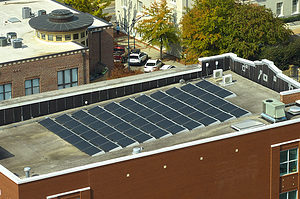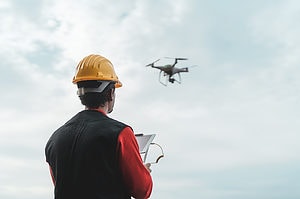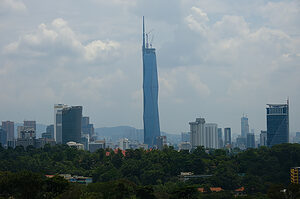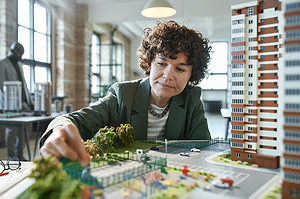
Embracing the Future: Anticipate Major Shifts with 2023’s Engineering Trends
As we step into 2023, it’s evident that significant changes and pioneering engineering trends are shaping the future of the architectural and engineering industries. With innovations in building design and technology evolving at a pace unprecedented in history, their influence and prevalence are set to reach new heights in the years ahead. Professionals eager to stay ahead of the curve and maintain a competitive edge must closely monitor these emerging trends.
In this detailed exploration, we’ll delve into the revolutionary transformations of building designs and the philosophies driving them, delve deeper into advancements in both software and hardware technologies, and forecast the direction in which the market is likely to steer in the imminent future. From a deeper understanding of these engineering trends, you’ll be well-equipped to navigate and thrive in the dynamic landscape of architectural and engineering fields.
Sustainability & Green Design
 We’ve watched green design slowly inch its way into practicality for well over a decade now. At one point, these were little more than pods with solar panels, but now an entire profession has sprouted from these concepts, and enormous companies like Amazon are even designing their new headquarters with green design in mind.
We’ve watched green design slowly inch its way into practicality for well over a decade now. At one point, these were little more than pods with solar panels, but now an entire profession has sprouted from these concepts, and enormous companies like Amazon are even designing their new headquarters with green design in mind.
This trend is driven by increasing concerns about climate change and the desire to reduce the environmental impact that buildings impose and lessen global emissions.
There are several ways that architects and engineers can incorporate sustainability into their designs. For example, they can use materials that are recycled or sustainably sourced, design buildings that use less energy, and incorporate features such as green roofs and rainwater harvesting systems.
Technology & Automation
 A key tool architects and engineers will need to become well acquainted with is Building Information Modeling (BIM). BIM is software that creates a 3D model of a building that allows designers to test vital infrastructure before construction even starts. Using green design as an example, architects and engineers can utilize BIM to virtually place solar panels and find the location where they can generate the most electricity, given weather patterns and the primary position of the sun for most of the year.
A key tool architects and engineers will need to become well acquainted with is Building Information Modeling (BIM). BIM is software that creates a 3D model of a building that allows designers to test vital infrastructure before construction even starts. Using green design as an example, architects and engineers can utilize BIM to virtually place solar panels and find the location where they can generate the most electricity, given weather patterns and the primary position of the sun for most of the year.
In addition to BIM, technology will continue to play a greater part in building design and construction. In recent years, there has been a proliferation of new tools and software that can help architects and engineers streamline their workflows and improve efficiency.
For example, 3D printing has become dramatically easier to take advantage of in a short amount of time. Architects and engineers can now easily print physical copies of their building designs to help investors and clients visualize the end product. We may also see 3D printers in construction in the near future, with builders using on-site 3D printers to create building components on the fly.
Another piece of relatively new technology is the use of drones which allow builders to survey sites for inspections. Drones allow for the easy gathering of high-resolution images and data about a construction site, which can be used to create accurate maps and models or to point out problems that require immediate fixing.
Increased Use of Prefabrication & Modular Construction
 Prefabrication and modular construction are expected to continue gaining popularity in the architectural and engineering fields in 2023. These methods involve the construction of building components off-site, then shipping them and assembling them on-site.
Prefabrication and modular construction are expected to continue gaining popularity in the architectural and engineering fields in 2023. These methods involve the construction of building components off-site, then shipping them and assembling them on-site.
One key advantage of prefabrication and modular construction is that they can help reduce construction times and costs. It takes a construction team longer to build four walls to a building than it does for an off-site crew to build walls and nothing but walls for shipping. It also allows for more precise construction since the building components are made in a controlled environment.
Greater Emphasis on Safety & Security
Covid made working from home a normal practice, and with many companies still allowing their employees to work outside the office, it would behoove builders to take safety and security into consideration. If residents are spending 8-10 additional hours every day at their homes, architects and engineers will need to consider a range of factors when designing buildings, including fire safety, structural stability, and cybersecurity.
One way to address these issues is through the use of advanced technologies such as smart building systems. These systems can help monitor and control various aspects of a building, such as lighting, HVAC, and security.
Growing Demand for Mixed-use & Multifamily Housing
 Another trend to watch in the architectural and engineering fields is the growing demand for mixed-use and multi-family housing like apartments, duplexes, and townhomes. This trend is driven by a variety of factors, including the increasing urbanization of the world’s population and the desire for more affordable living spaces.
Another trend to watch in the architectural and engineering fields is the growing demand for mixed-use and multi-family housing like apartments, duplexes, and townhomes. This trend is driven by a variety of factors, including the increasing urbanization of the world’s population and the desire for more affordable living spaces.
Mixed-use buildings, which combine residential, commercial, and other uses in a single structure, can help create more vibrant and livable communities, something that has since disappeared in the wake of people seeking out more digital connections. While something of an extreme example, the Merdeka 118 in Kuala Lumpur will mix offices spaces, living spaces, and a mall.
In Summary
 As we look ahead to 2023, the trends in the architectural and engineering fields are clear:
As we look ahead to 2023, the trends in the architectural and engineering fields are clear:
- A wider implementation of sustainability and green design
- Increases in the implementation of technology
- Prefabrication and modular building design
- An emphasis on safety and security
- And a greater demand for mixed-use and multi-family housing
To stay competitive in this rapidly evolving industry, it’s vital to stay up-to-date on these trends and to be open to adopting new technologies and approaches. The future of building design is looking to be an interesting, if challenging one; perhaps the greatest shift we’ve seen in recent history of the industry.
In conclusion, staying ahead of the curve in today’s rapidly evolving architectural, engineering, and construction industries requires a proactive approach to understanding and leveraging the latest engineering trends. As we’ve discussed, 2023 promises to bring significant shifts that will redefine the industry norms, presenting both challenges and opportunities.
AE Concepts is uniquely positioned to help you navigate these transformations, bringing our specialized industry knowledge, years of experience, and rigorous recruitment strategies to your benefit. But the future waits for no one – now is the time to act.
If you’re a professional seeking to harness these engineering trends to enhance your career, or an employer aiming to secure top talent capable of navigating these changes, we invite you to reach out to us. Allow AE Concepts to be your trusted partner in this exciting journey into the future of engineering. Contact us today or call us at 407.835.8000, and let’s turn these trends into your success stories.
